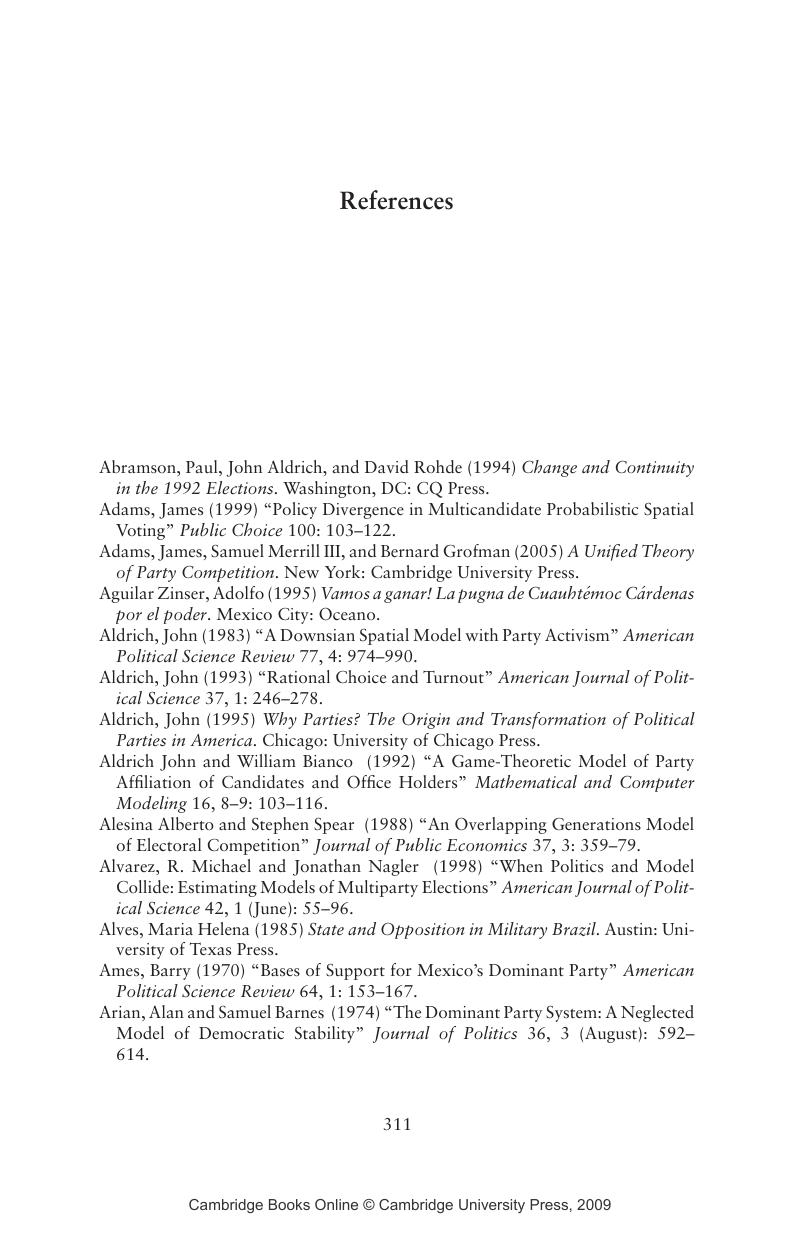References
Published online by Cambridge University Press: 27 July 2009
Summary

- Type
- Chapter
- Information
- Why Dominant Parties LoseMexico's Democratization in Comparative Perspective, pp. 311 - 332Publisher: Cambridge University PressPrint publication year: 2007



